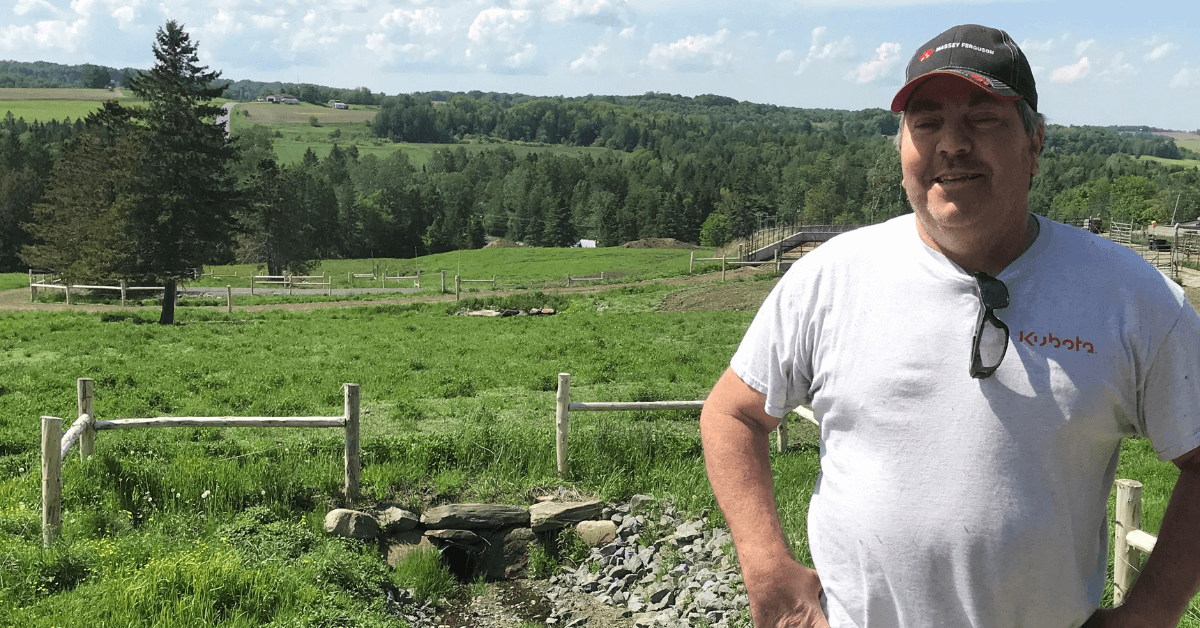HOLLAND — The Orleans County Conservation District and partners say they have focused on improving water quality throughout the local watershed.
Located in the town of Holland, Andre Morin’s farm is within the Stearns Brook watershed.
Stearns Brook flows northeasterly and is listed on the Vermont Dept. of Environmental Conservation’s 2016 stressed waters list for agricultural and gravel road runoff, and morphological instability.
Stearns Brook drains to Quebec’s Lake Massawippi which has elevated levels of phosphorus.
The Orleans County Conservation District staff, Sarah Damsell, and other partners say their focused efforts have improved water quality conditions by implementing best management practices (BMP) throughout the watershed.
Orleans County Conservation District staff started working with Morin in 2016 when he agreed to participate in their farm BMP effectiveness monitoring program.
Elevated levels of phosphorus in the unnamed waterway that runs through the Morin farm were discovered by the Orleans County Conservation District through water monitoring programs.
Samples were collected eight times per year including two rain events in 2017, 2018, and 2019 at two locations above and below the farm.
Morin bought his 116-acre farm from his parents in 1992, who had purchased it in 1984.
In 2016, he started working with the Vermont Land Trust and the Vermont Housing & Conservation Board to place a permanent conservation easement on his farm.
As part of the easement terms, Morin agreed to address all required agricultural practices, including addressing the herd management practices of a heavy use production area adjacent to the waterway.
With assistance from Orleans County NRCD staff, he has discontinued the practice of feeding in paddocks adjacent to the waterway and allowing livestock access along the waterway.
In 2019 Andre completed a new heavy use area barnyard project.
He also installed exclusion fencing, alternative watering, stream crossings, and laneway projects.
“The project improved the farm because the cows are out of the mud,” Morin said. “There is more room to feed in one place, it is easier to maintain, and the work benefits the local waters because the cows are not going in the stream whenever they want.”
He sold his cows in the winter of 2020 because of personal health limitations but his brother John will continue to use the facilities, pastures, and crop fields.
The installation of BMPs in the summer of 2019 appears to have dramatically reduced the phosphorus loading from the farmstead and pasture areas.
Analysis suggests that there was an 85 percent reduction in phosphorus levels.
It is unusual to be able to document such a dramatic improvement with only one season of data.
Morin believes that farm conservation work that helps water quality is good because everybody uses rivers and lakes.
“When one farm here and another farm there does a project like this it adds up to have a bigger effect and I am proud to be a part of that work,” Morin added.


